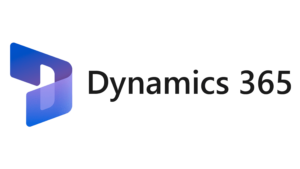We will get to know the brief history of Microsoft Dynamics 365 and its journey towards becoming worlds most efficient CRM / ERP. Before we start, make sure to subscribe to CRM Crate so that you can stay up to date in the field of Power Platform.

Understanding history of Microsoft Dynamics 365
Dynamics 365 has a history that dates back to the early 2000s. Below are some key milestones & history of Dynamics 365.
Launch of Microsoft CRM 1.0 (Year 2003)
The history of Dynamics 365 can be traced back to the launch of Microsoft CRM in 2003. This was the initial foray into the CRM market by Microsoft.
When Microsoft first released their CRM system in year2003, it was named “Microsoft Business Solutions Customer Relationship Management 1.0”, later they renamed it to “CRM 1.0.”.
Initially, CRM 1.0 did not build reports utilizing SQL, instead, it used Crystal Reports which is now marketed to small businesses by SAP SE.
Microsoft introduced CRM 1.0 in January 2003, and by December of the same year, CRM 1.2 was launched. CRM 1.2 aimed to enhance daily user interactions with the system. It facilitated the creation and management of customizations for a more advanced user experience. Moreover, CRM 1.2 seamlessly integrated with various other business systems and possessed the flexibility to adapt and continually meet a company’s evolving requirements.
Launch of Microsoft Dynamics CRM 3.0 (Year 2005)
In 2005, CRM 3.0 made its debut (yes, there was no 2.0 in between this and its previous version). It underwent a rebranding as Microsoft Dynamics 3.0 to signify its integration into Microsoft’s broader Dynamics product lineup. Microsoft Dynamics 3.0 was marketed as the go-to CRM solution, catering to businesses of all sizes, from small enterprises to large corporations. It offered a robust suite of marketing, sales, and service capabilities. Notably, it capitalized on its user-friendly familiarity, as it was built around Microsoft Office Word and Outlook. Its versatile platform also enabled Microsoft to provide customers with a range of deployment choices.
Launch of Microsoft Dynamics CRM 4.0 (Year 2007)
In December 2007, Microsoft rolled out Microsoft Dynamics CRM 4.0, code-named “Titan,” which introduced a range of remarkable and potent features. These enhancements included bolstered security measures, streamlined data importing, seamless direct mail merging, and native support for emerging operating systems like Windows 2008 and technologies such as SQL 2008.
CRM 4.0 also ushered in the adoption of a cutting-edge feature, enabling multiple clients to access the program via a single server, employing a multitenant architecture, commonly referred to as multi-tenancy. Additionally, it marked the introduction of CRM online.
Microsoft’s deployment strategy extended its global reach, offering CRM 4.0 in a selection of more than 25 languages and providing support for various currencies. “Titan” delivered advanced business capabilities compared to its predecessors, including an intuitive end-user reporting wizard, cross-entity views, and sophisticated business process automations leveraging Microsoft’s Workflow Foundation from Windows.
Notably, CRM 4.0 incorporated advanced collaboration features by seamlessly integrating with Microsoft Office Communications Server 2007, enabling real-time presence indicators within the CRM application. As expected, MSCRM 4.0 garnered the most significant market adoption to date, boasting an impressive 1 million users by July 2009.
Launching Microsoft Dynamics CRM 2011 (Year 2010)
In February, Microsoft unveiled their third CRM solution (or fourth, if we count 1.2). Microsoft Dynamics CRM 2011 introduced an innovative concept: solutions and solution layers. This approach enabled partners to offer managed packages of customizations and web resources that could be deployed to customers in a manner similar to how you would install an app on your smartphone.
CRM 2011 also brought about a notable change—the introduction of dashboards. These dashboards allowed users to succinctly summarize the data stored in their CRM systems and present it in real time, providing them with a comprehensive 360-degree perspective on various aspects of their business.
Furthermore, CRM 2011 integrated the ribbon, a feature commonly associated with the Microsoft Office environment. This addition facilitated a smoother transition between different areas within the system.
Shortly after its release, Microsoft announced a shift toward a more agile approach to CRM product development. They planned to roll out updates twice a year, departing from the original release cycle of 2-3 years, which was more typical for business software.
Launching Microsoft Dynamics CRM 2013 (Year 2013)
In their pursuit of the future, Microsoft unveiled Microsoft Dynamics CRM 2013. In this era, business operations extended beyond traditional desktop settings, acknowledging the demand for a mobile workforce that sought access to their work environments on the move.
Microsoft Dynamics CRM 2013 accommodated this shift, offering clients not only for various web browsers and desktops utilizing Outlook but also for tablet devices running Windows 8 and iOS, smartphones equipped with Windows Phone 8, Android, or iOS, and even other less common devices that could access the updated Mobile Express web client.
The user interface received a significant facelift, resulting in a cleaner and more streamlined display, enhancing the overall user experience. Notably, there was a substantial reduction in pop-up notifications, which were not a favorite among users.
Moreover, Microsoft introduced two notable additions to MSCRM 2013. Server-side synchronization was brought into play, along with Business Process Flow forms. These enhancements were accompanied by fresh capabilities that allowed users to perform customizations that had previously required plug-ins. These capabilities were known as business rules and real-time workflows.
Launching Microsoft Dynamics CRM 2015 (2014)
The fourth quarter of 2014 saw the launch of this product, which introduced an enhanced Excel user experience, integrated OneNote, Social Engagement features, and more robust and dynamic marketing capabilities.
Launching Microsoft Dynamics CRM 2016
Microsoft Dynamics CRM 2016 was officially released on November 30, 2015. It includes advancements in intelligence, mobility and service, with significant productivity enhancements.
A unique application called Business Card Reader for MS Dynamics, which transfers scanned information from business cards to MS Dynamics CRM, was created in June 2016. Additionally, in 2017, the Call Tracker application was also developed.
Microsoft Dynamics 365
Dynamics 365 was officially released in November 2016, offering a range of applications covering sales, customer service, field service, operations, finance, and more. These applications were offered as modules that could be used independently or together as needed. Below are the key modules offered by Microsoft Dynamics 365.
1. Dynamics 365 for Sales
2. Dynamics 365 for Customer Service
3. Dynamics 365 for Marketing
4. Dynamics 365 for Field Service
5. Dynamics 365 for Project Service Automation
6. Finance & Operations.
7. Supply Chain Management
8. Commerce
9. Human Resource
10. Project Automation
11. Business Central
It’s important to note that the evolution of Dynamics 365 is ongoing, and Microsoft is likely to continue to innovate and expand its features and capabilities to meet the changing needs of businesses.





